16 Giant Fish That Rule The Ocean’s Depths
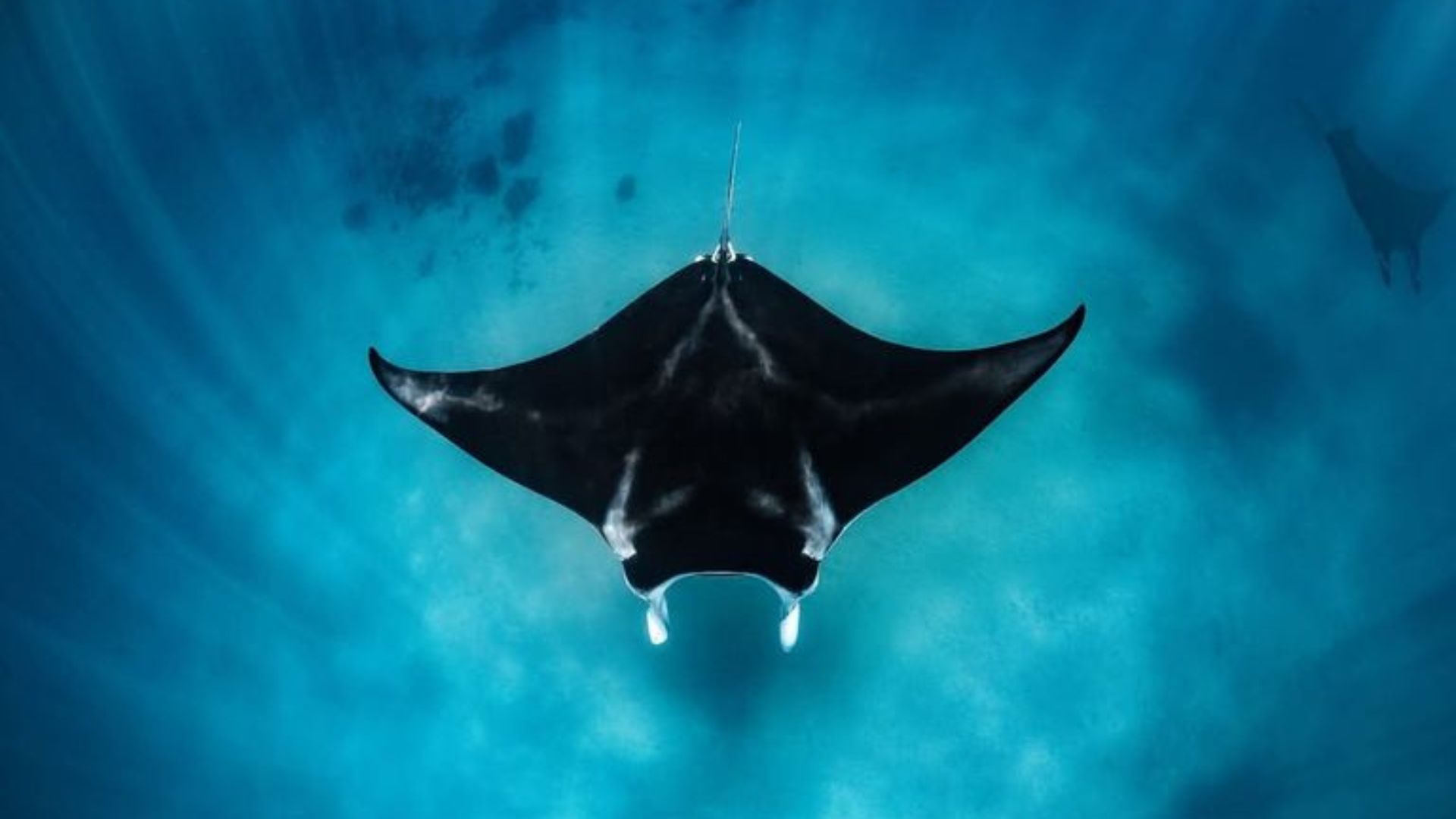
In the mysterious blue expanses of our oceans, where sunlight barely kisses the surface and shadows stretch into eternity, reside the true titans of the deep. These colossal fish, each with its own tale of wonder and intrigue, reign supreme in their underwater realms.
Their impressive sizes and unique characteristics make them subjects of awe and study. Join us as we embark on an exciting journey to explore these giant fish that rule the ocean’s depths.
1. Whale Shark
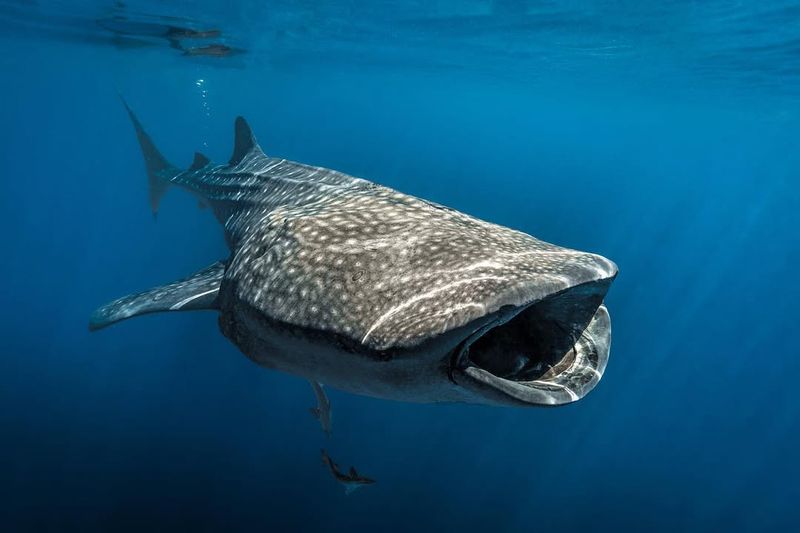
The whale shark truly earns its spot as the gentle giant of the ocean. Despite its colossal size, reaching lengths up to 40 feet, this filter feeder is more interested in plankton than people. With its wide, flat head and characteristic white spots, it glides gracefully through tropical seas.
This majestic fish often swims alongside snorkelers who marvel at its sheer size and gentle nature. Unlike many of its shark cousins, it poses no threat to humans. However, its size alone commands respect and admiration from all who encounter it. Whale sharks exhibit a unique behavior known as vertical feeding, where they position themselves upright to consume large amounts of food.
This fascinating method allows them to efficiently filter-feed in the nutrient-rich waters they inhabit. Observing a whale shark in its natural habitat is a dream for many marine enthusiasts, offering a glimpse into the wonders of ocean life.
Their placid demeanor and impressive size make them ambassadors of the sea, reminding us of the ocean’s vast mysteries and the gentle giants that dwell within.
2. Giant Oceanic Manta Ray
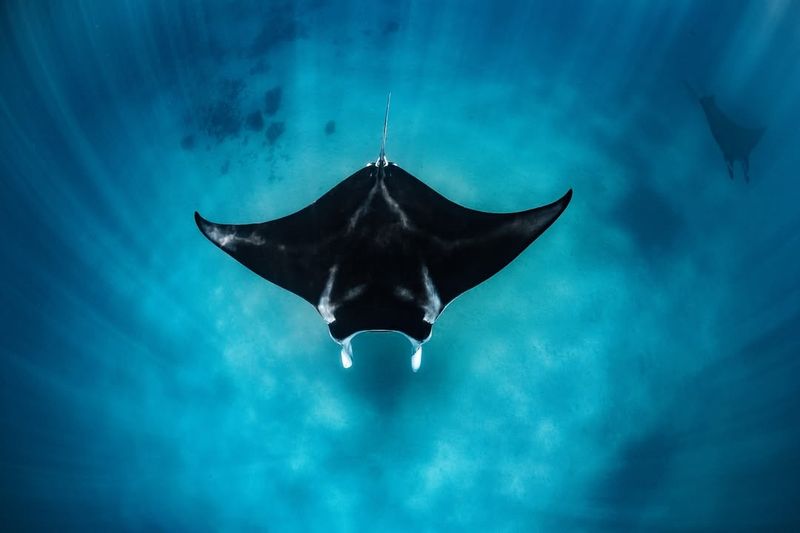
Soaring through the oceans like an underwater aircraft, the giant oceanic manta ray captivates with its grace and beauty. Its wingspan can stretch over 23 feet, making it one of the largest rays in the world. Known for its acrobatics, it often leaps out of the water, causing a splash that’s hard to miss. These creatures are incredibly intelligent, with large brains relative to their body size.
Manta rays are filter feeders, gliding through plankton-rich waters while keeping their mouths wide open. This feeding technique ensures they consume the necessary nutrients to sustain their massive size. Despite their grandeur, they are gentle and pose no threat to humans. The sight of a manta ray dancing in the water is mesmerizing and unforgettable. Conservationists work tirelessly to protect these creatures, who face threats from fishing and habitat loss.
Their presence is a reminder of the intricate balance within marine ecosystems. Observing them in their natural habitat inspires awe and a deeper appreciation for the ocean’s wonders. With every graceful glide, they write a silent poem of elegance and strength beneath the waves.
3. Great White Shark
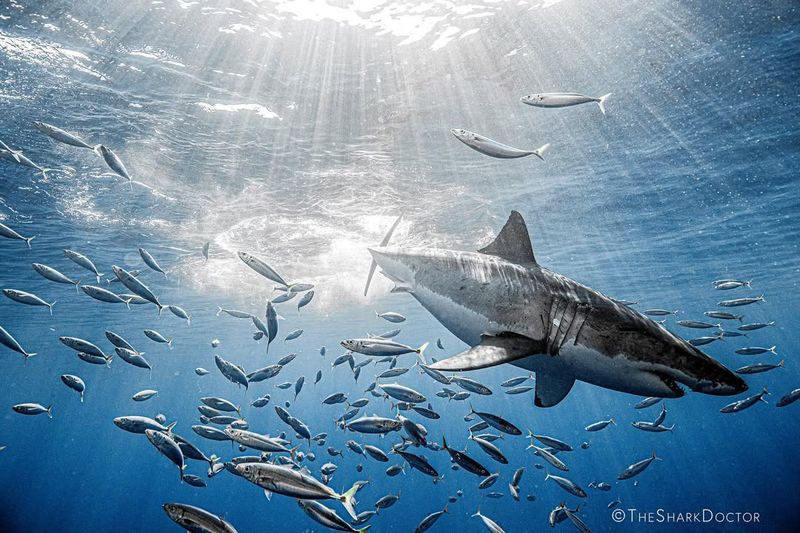
The great white shark is a legendary figure in the ocean, known for its power and presence. As one of the ocean’s top predators, it commands attention with its sharp teeth and sleek, muscular body. Reaching lengths of up to 20 feet, the great white is an apex predator, playing a pivotal role in maintaining the balance of marine life. Despite their fearsome reputation, these sharks are more curious than aggressive towards humans.
They often investigate unfamiliar objects with gentle nudges rather than attacks. Great whites are keen hunters, equipped with sensory adaptations that allow them to detect prey from great distances. Their diet consists mainly of marine mammals and fish, which they hunt with incredible precision and speed. These sharks are often featured in documentaries and films, fueling both fascination and fear.
Conservation efforts aim to protect their populations, which are vital for healthy ocean ecosystems. Encountering a great white shark is both thrilling and humbling, a reminder of the wild beauty and power of nature. As they glide silently beneath the waves, they embody the untamed spirit of the ocean.
4. Sunfish (Mola Mola)
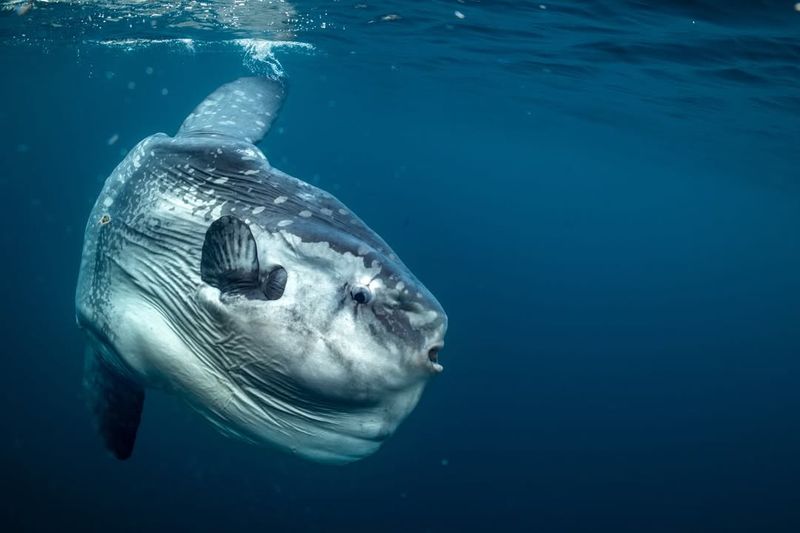
The sunfish, or Mola Mola, stands out as one of the ocean’s most peculiar and fascinating giants. With a body resembling a floating head, it can weigh up to 2,200 pounds, making it one of the heaviest bony fish. Despite their cumbersome appearance, sunfish are surprisingly agile in the water. They enjoy basking in the sun near the surface, which helps regulate their body temperature. This behavior often causes surprise among boaters, who might confuse the large dorsal fin for a shark.
Sunfish predominantly feed on jellyfish, showcasing their ability to thrive on a diet many other creatures avoid. Their unique shape and gentle demeanor make them a delight to observe in the wild. However, their populations face threats from bycatch and marine debris.
Efforts to protect them and their habitats are crucial for their survival. Witnessing a sunfish in its natural environment is a remarkable experience, blending curiosity with admiration for nature’s quirkiest design. They remind us that life in the ocean is full of surprises, with each creature playing an essential part in the marine ecosystem.
5. Goliath Grouper
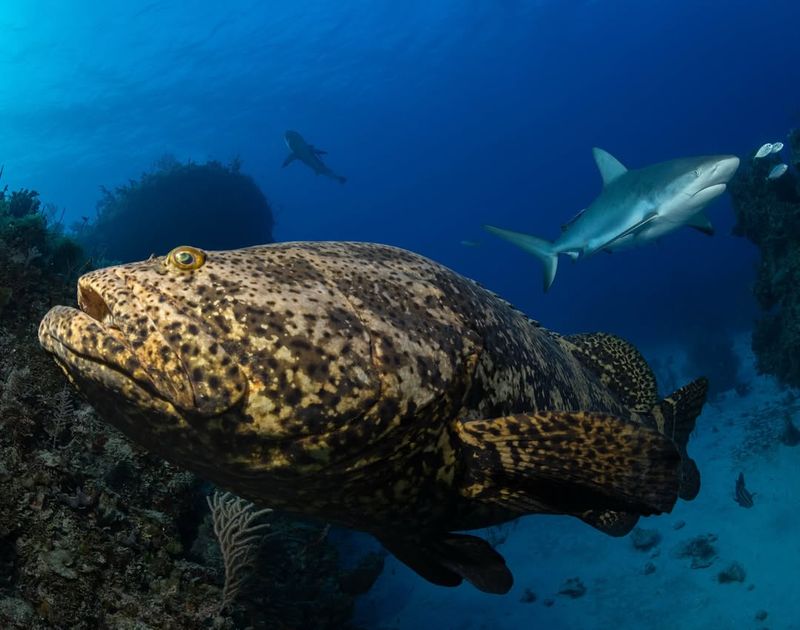
These giants can grow up to 8 feet long and weigh over 800 pounds, making them one of the largest bony fish in the ocean. Found in warm, shallow waters, they often inhabit shipwrecks and coral reefs. Their mottled skin provides excellent camouflage among the rocks and corals.
Goliath groupers have a robust build and are known for their voracious appetites. They feed on a variety of marine life, including crustaceans and smaller fish. Despite their intimidating size, they are generally calm and can be curious around divers. Observing a goliath grouper in its natural habitat is an awe-inspiring experience, as it moves gracefully despite its bulk.
These gentle giants play a vital role in maintaining the health of reef ecosystems. They serve as a reminder of the ocean’s abundance and the delicate balance that sustains it. Their presence is a testament to the wonders of marine biodiversity.
6. Beluga Sturgeon
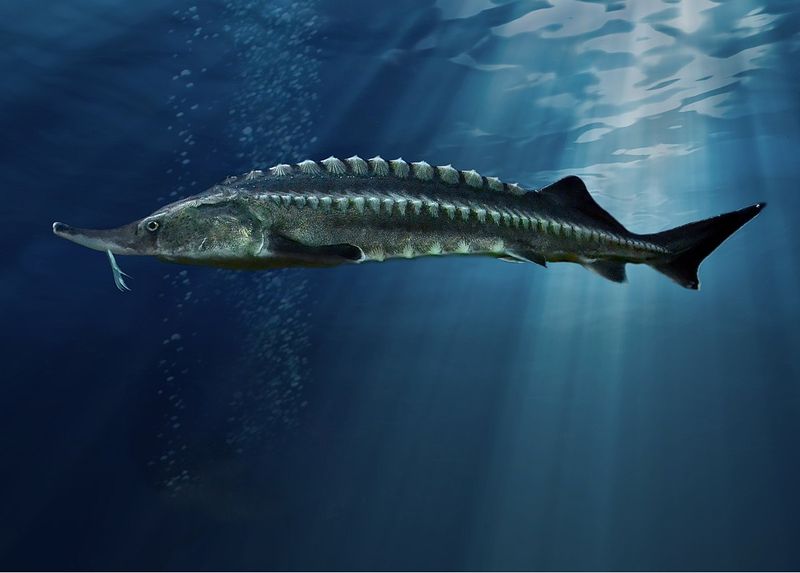
The beluga sturgeon, often called the ‘living fossil,’ traverses the waters with an ancient grace. This remarkable fish can grow up to 20 feet long, with some specimens living over a century. Found primarily in the Caspian and Black Sea basins, they are known for their roe, which is processed into the luxurious delicacy known as caviar. These fish have a unique, shark-like appearance, with elongated bodies and bony scutes along their backs.
Beluga sturgeons are anadromous, migrating from saltwater to freshwater rivers to spawn. Their long lifespan and slow reproduction rate make them vulnerable to overfishing and environmental changes. Conservationists work tirelessly to protect their dwindling populations, emphasizing sustainable fishing practices and habitat restoration. Witnessing a beluga sturgeon in the wild is like stepping back in time, encountering a relic from Earth’s prehistoric past.
Their presence in the waters serves as a poignant reminder of the need to protect our planet’s biodiversity. Every encounter with a beluga sturgeon is a chance to marvel at the wonders of evolution and the delicate balance that sustains these ancient giants.
7. Bluefin Tuna
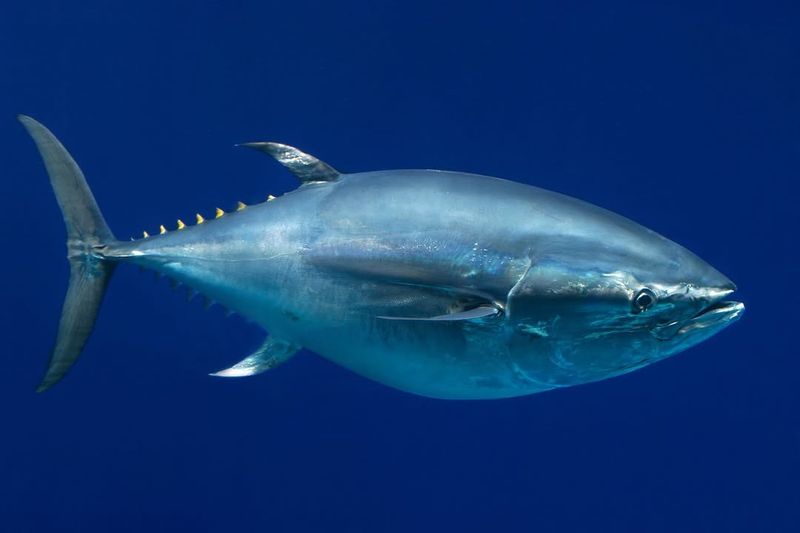
Sleek, powerful, and incredibly fast, the bluefin tuna is the torpedo of the ocean. This magnificent fish can grow over 10 feet long and weigh up to 1,500 pounds, making it one of the largest and most sought-after fish by fishermen. Known for their incredible speed, bluefins are capable of reaching 40 miles per hour, thanks to their streamlined bodies and muscular build.
These oceanic sprinters migrate across vast distances, following the currents and food sources. Their diet primarily consists of smaller fish, squid, and crustaceans. Unfortunately, the bluefin tuna’s popularity in sushi and sashimi has led to severe overfishing. Conservation efforts focus on sustainable fishing practices to ensure future generations can witness their majesty.
Observing a bluefin tuna in action is a breathtaking sight, capturing the raw power and elegance of the ocean. Their existence is a testament to nature’s engineering, perfectly adapted to life in the open sea. Every encounter with a bluefin tuna is a reminder of the ocean’s wonders and the responsibility we hold in preserving its inhabitants for future generations to admire and cherish.
8. Giant Trevally
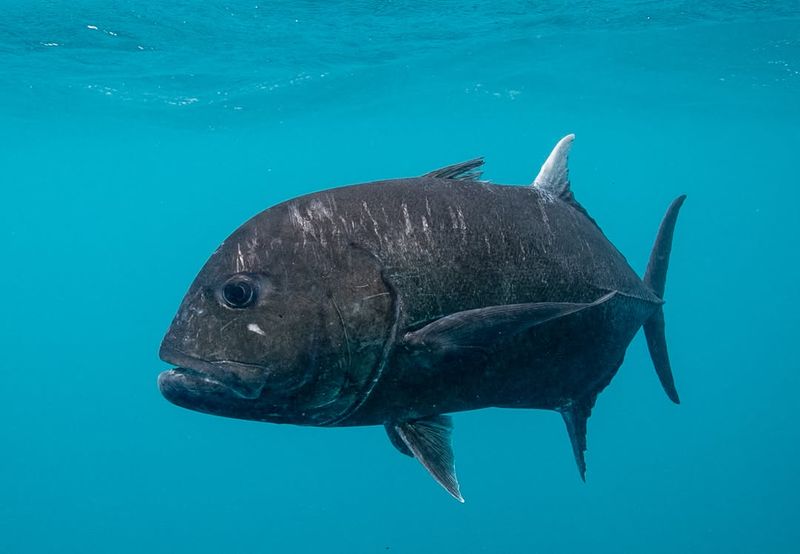
This formidable predator can grow up to 5 feet long and weigh over 130 pounds. Known for their aggressive hunting tactics, giant trevallies are apex predators in their habitats. They hunt in packs, coordinating attacks on schools of fish with precision and speed. Their diet includes a variety of marine life, such as fish, crustaceans, and even seabirds. This bold behavior makes them a favorite target for sport fishermen seeking a challenging catch.
Despite their tough exterior, they play an essential role in maintaining the balance of their ecosystems. Conservation efforts focus on preserving their habitats and regulating fishing practices. Observing a giant trevally in action is an exhilarating experience, showcasing the raw power and cunning of nature’s hunters.
Their presence is a reminder of the intricate web of life within the ocean and the importance of protecting these delicate ecosystems. With their fierce reputation and impressive size, giant trevallies are true icons of the sea’s untamed spirit.
9. Atlantic Halibut
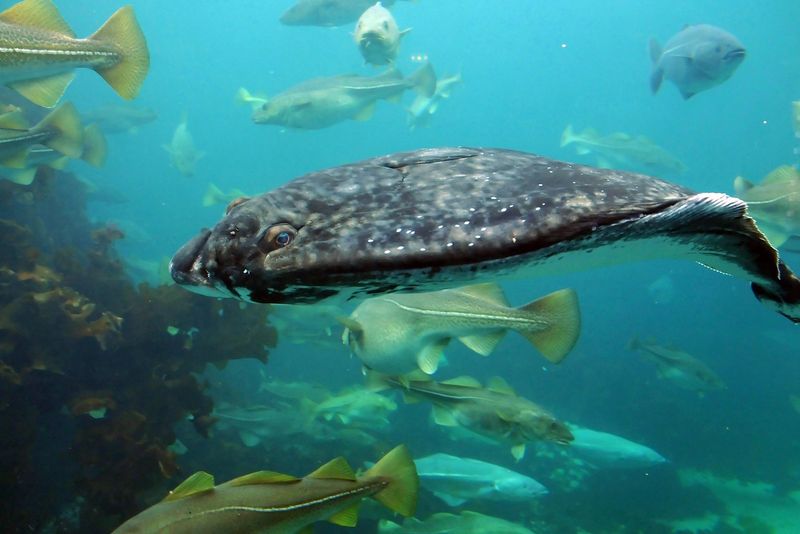
The Atlantic halibut is a master of disguise, blending seamlessly into the ocean floor with its flat, diamond-shaped body. Growing up to 15 feet long and weighing over 700 pounds, it is the largest flatfish in the world. These giants inhabit the cold, deep waters of the North Atlantic, where they lie in wait for unsuspecting prey. Their diet consists mainly of smaller fish and crustaceans, which they ambush with surprising speed.
Atlantic halibuts are a prized catch for fishermen, but their slow growth rate makes them vulnerable to overfishing. Conservation efforts focus on sustainable fishing practices to protect their populations. Observing an Atlantic halibut in its natural habitat is a fascinating experience, revealing the hidden wonders of the ocean floor.
Their camouflage abilities and patient hunting tactics are a testament to nature’s ingenuity. Every encounter with an Atlantic halibut is a reminder of the ocean’s complexity and the delicate balance that sustains its inhabitants.
With their impressive size and unique adaptations, Atlantic halibuts are true marvels of the deep sea, embodying the mysterious allure of the underwater world.
10. Pacific Sleeper Shark
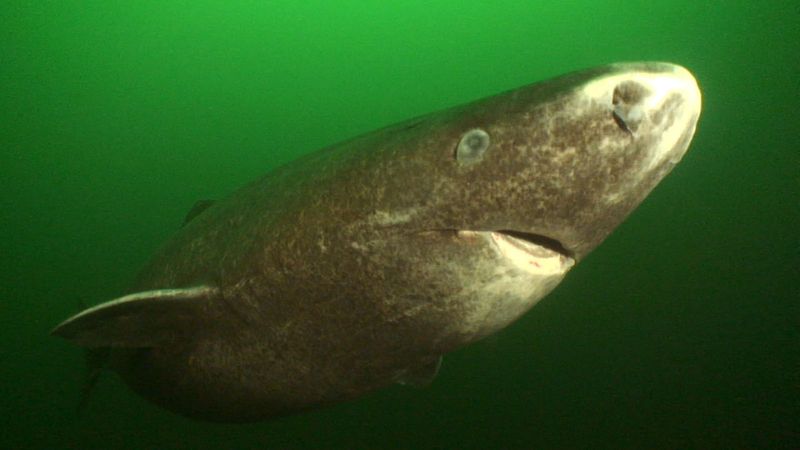
In the frigid depths of the North Pacific, the Pacific sleeper shark prowls with a quiet, ghost-like presence. These elusive giants can grow over 20 feet long, making them one of the largest sharks in the ocean. Known for their sluggish nature, they conserve energy as they drift through the cold, deep waters. Despite their slow pace, Pacific sleeper sharks are effective predators, feeding on fish, squid, and even carrion.
Their stealthy hunting methods make them formidable hunters in the dark abyss. Little is known about these mysterious sharks, adding to their enigmatic allure. Research efforts aim to uncover the secrets of their life cycles and behaviors. Encountering a Pacific sleeper shark is a rare and thrilling experience, offering a glimpse into the hidden world of deep-sea life.
As they silently navigate the depths, Pacific sleeper sharks embody the mysteries of the deep sea, urging us to explore and protect the wonders of our oceans. Every sighting is a testament to the uncharted secrets of the underwater realm.
11. Giant Freshwater Stingray
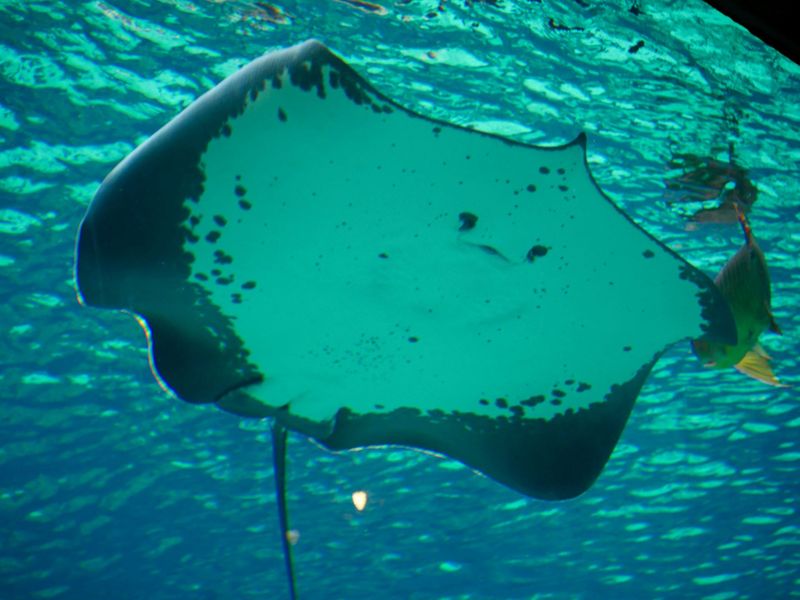
Dwelling in the murky rivers of Southeast Asia, the giant freshwater stingray reigns as one of the largest fish in freshwater environments. These colossal creatures can reach lengths over 16 feet, including their long, whip-like tails. Despite their intimidating size, they are gentle giants, preferring to lie hidden beneath the riverbed. Their flat bodies and sandy coloration provide perfect camouflage against predators.
Giant freshwater stingrays feed on crustaceans and small fish, which they detect using electroreception. These enigmatic creatures face threats from habitat loss and overfishing, prompting conservationists to advocate for their protection. Observing a giant freshwater stingray in its natural habitat is a humbling experience, revealing the hidden diversity of river ecosystems.
Their presence emphasizes the importance of preserving freshwater habitats and the unique species that inhabit them. Witnessing them glide gracefully through the water is a reminder of nature’s ability to surprise and inspire. As guardians of the rivers, giant freshwater stingrays reflect the intricate balance and beauty of the underwater world, urging us to protect and cherish our planet’s aquatic wonders.
12. Greenland Shark
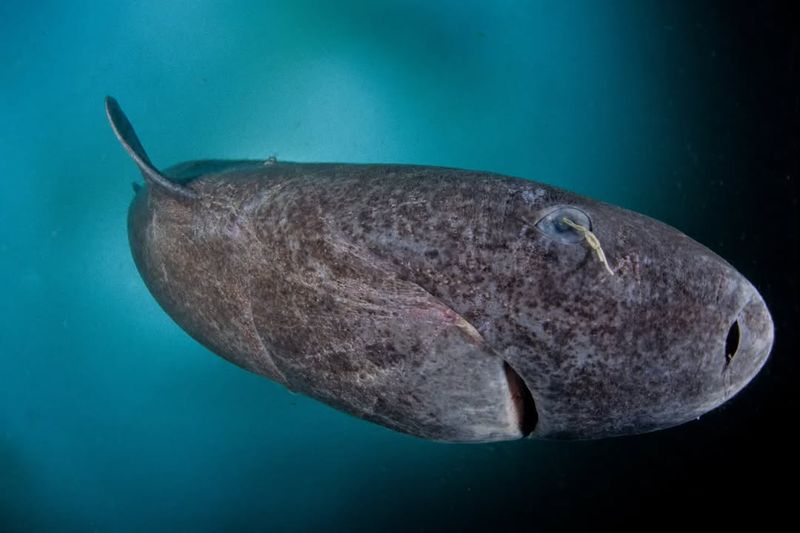
In the icy depths of the Arctic, the Greenland shark moves with ancient, deliberate grace. These mysterious giants can grow up to 24 feet long, making them one of the largest and oldest living vertebrates. Known for their slow movement and long lifespans, some Greenland sharks are believed to live over 400 years. They navigate the frigid waters with ease, feeding on fish, seals, and even carrion.
Their sluggish nature is an adaptation to the cold, conserving energy for survival. Despite their size, they remain largely enigmatic, with much of their biology and behavior still shrouded in mystery. Research initiatives strive to uncover the secrets of their longevity and ecological role. Encountering a Greenland shark is like stepping back in time, witnessing a relic of the ocean’s past.
As they glide through the Arctic waters, Greenland sharks embody the endurance and mystery of the deep sea, inviting us to explore and protect the fragile ecosystems that sustain such ancient wonders. Every sighting is a glimpse into the ocean’s timeless depths.
13. Mekong Giant Catfish
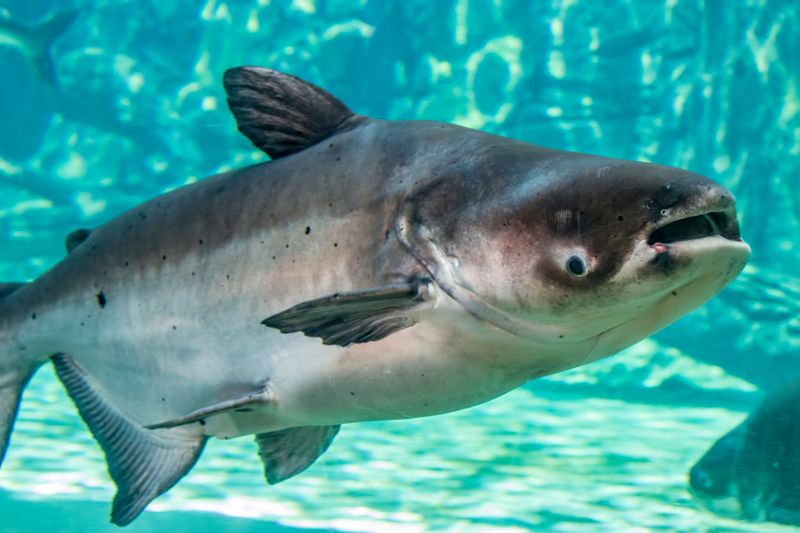
These giants can grow over 10 feet long and weigh more than 600 pounds, making them one of the largest freshwater fish in the world. Found in the murky waters of the Mekong River, they are a symbol of the rich biodiversity of Southeast Asia. Mekong giant catfish are filter feeders, sifting through the river for plankton and algae. Despite their size, they are peaceful creatures, posing no threat to humans.
However, their populations face severe threats from overfishing and habitat destruction, prompting urgent conservation efforts. Observing a Mekong giant catfish in the wild is a rare and awe-inspiring experience, highlighting the wonders of river ecosystems.
As guardians of the river, Mekong giant catfish reflect the harmony and diversity of aquatic life, urging us to protect these vital habitats for future generations. Every encounter is a celebration of nature’s resilience and the beauty of life in the wild.
14. Tiger Shark
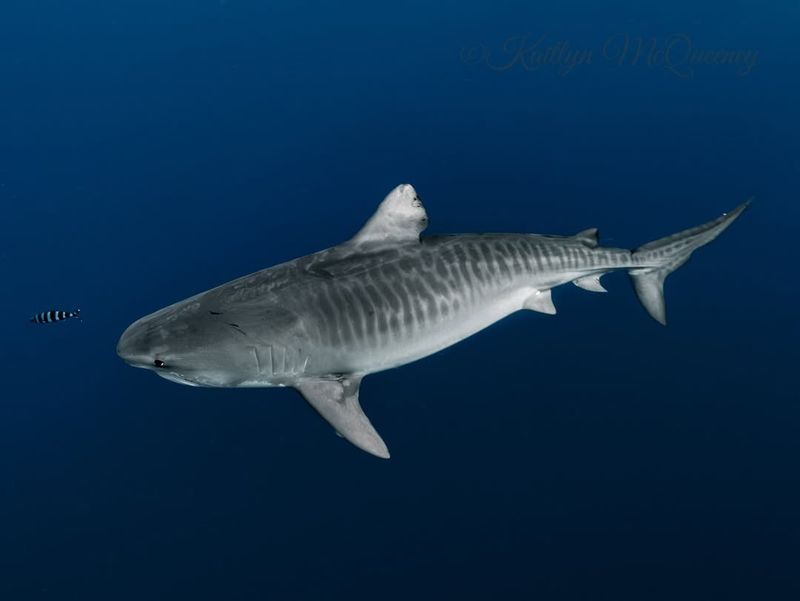
The tiger shark, with its bold stripes and formidable reputation, is a true icon of the ocean. These powerful predators can grow up to 16 feet long and are known for their diverse diet, which includes fish, turtles, birds, and even inanimate objects. Their name derives from the distinctive vertical stripes that adorn their bodies, resembling a tiger’s pattern. Found in warm coastal waters, tiger sharks are opportunistic hunters, using their keen senses to detect prey.
Despite their fearsome reputation, they play a crucial role in maintaining the health of marine ecosystems by controlling prey populations. Conservation efforts focus on protecting their habitats and regulating fishing practices.
Encountering a tiger shark in the wild is both thrilling and humbling, offering a glimpse into the raw power of nature. Their presence serves as a reminder of the ocean’s rich biodiversity and the importance of preserving its inhabitants.
As they glide through the water with grace and precision, tiger sharks embody the untamed spirit of the sea, urging us to respect and protect the delicate balance of marine life. Every sighting is a testament to the ocean’s wild beauty.
15. Nile Perch
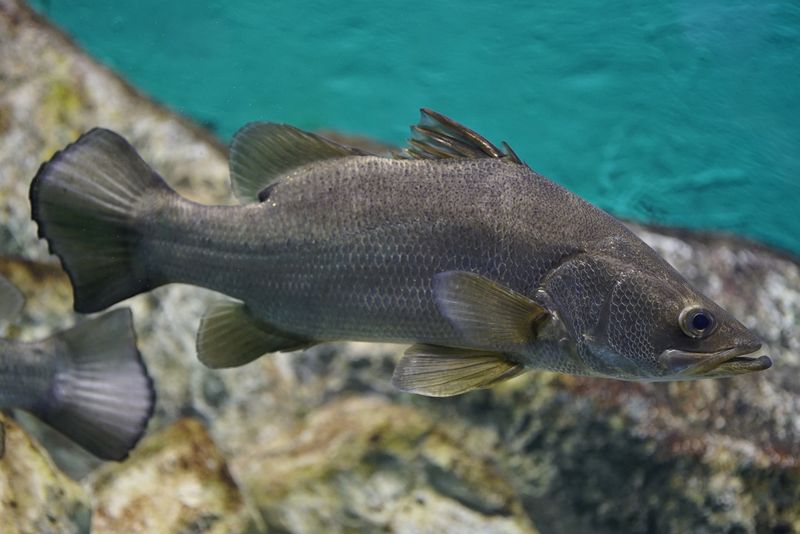
These giants can grow over 6 feet long and weigh more than 500 pounds, making them one of the largest freshwater fish. Found primarily in Lake Victoria, they are invasive species introduced for fishing purposes. Nile perch are voracious predators, feeding on smaller fish and significantly altering the local ecosystems. Their introduction has led to the decline of many native species, highlighting the complex challenges of managing invasive species.
Conservation efforts aim to balance their economic benefits with the need to protect native biodiversity. Observing a Nile perch in its natural environment is a fascinating experience, showcasing the dynamic interactions within freshwater ecosystems.
Despite their controversial legacy, they are a reminder of nature’s ability to adapt and evolve. As stewards of the environment, we are challenged to find sustainable solutions that protect both human livelihoods and the planet’s biodiversity. Every encounter with a Nile perch is a reflection on the complexities of ecosystem management and the importance of informed conservation strategies.
16. Basking Shark
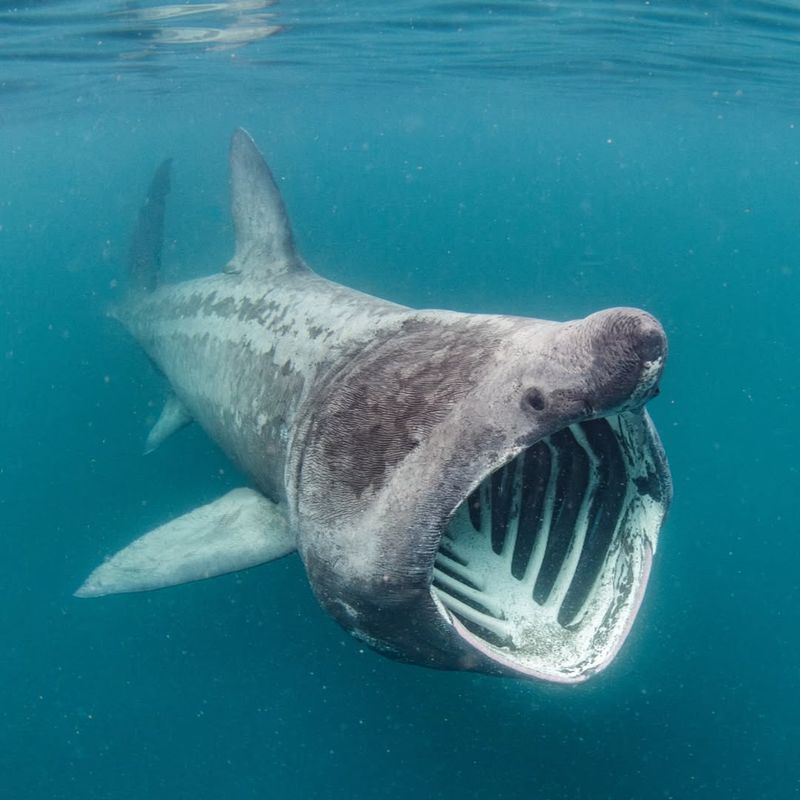
The basking shark, with its enormous mouth and gentle demeanor, is a giant of the ocean’s surface. These filter-feeding behemoths can grow up to 40 feet long, making them the second largest fish after the whale shark. Despite their intimidating size, basking sharks are harmless to humans, feeding primarily on plankton. They swim slowly near the surface, mouths agape, taking in massive volumes of water to filter out their tiny prey.
Basking sharks are a favorite among marine enthusiasts, offering a unique glimpse into the world of gentle giants. Conservation efforts focus on protecting their habitats from threats like pollution and overfishing. Observing a basking shark in its natural habitat is a serene and awe-inspiring experience, highlighting the ocean’s capacity for awe and wonder.
Their gentle nature and enormous size serve as a reminder of the ocean’s vast mysteries and the delicate balance that sustains its life. As they glide through the water, basking sharks embody the peaceful beauty and grandeur of the sea’s surface, urging us to cherish and protect these majestic creatures.
